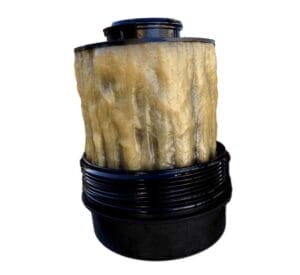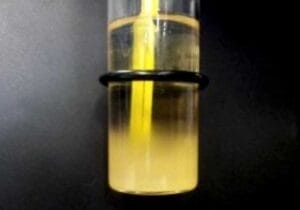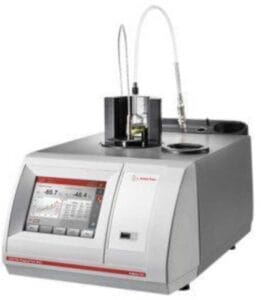Understanding how diesel fuel functions in cold weather is more complicated than most would expect or want it to be, but Fleet Core has built some simple options to eliminate your concerns. The variability of #2 ULSD cloud points and operability on the front range is similar regardless of the refiner. Most of the fuels are what the energy industry would deem higher cloud point diesel with cloud points of +12F to 0F at best. That means as a diesel consumer, it’s essential to plan for extreme weather; Fleet Core is here to help you with those decisions, But it’s important to make those decisions early, ahead of cold weather, allowing treated fuel to make its way into your entire fleet’s fuel systems.
One major issue is knowing your diesel source and cloud point, which can be very difficult in a market with inconsistent supply and constant refining issues. The front range is typically short of diesel based on local production and demand needs; therefore, Colorado relies on imported diesel fuels to feed the growing market. That means variability in diesels and inconsistent cloud points, so one must prepare for the worst if one must operate in extreme temperatures. The highest spec #2 ULSD allowed in the front range market during winter is +12F cloud point. Fleet Core has a plan to help you get to any operability temperature needed between 0F and -40F. Our plan options are laid out below.

PLAN A: CORE POWER
Plan A is designed to achieve top-performing #2 ULSD for 99% of days of operation on the front range. Core Power diesel uses an anti-gel treatment with a deicer and cetane booster that will give protection to 0F to -5F (real-world operability, not CFPP) regarding filterability in most equipment. It will also provide you with outstanding engine protection with elevated levels of lubricity chemistry and industry-leading detergent technology. On average, you will experience an increase of 3.5% better fuel economy over standard #2ULSD.
PLAN B: CORE POWER
Plan B is a combination of Plan A with the addition of WASA chemistry. We can better modify wax’s shape, size, and density when used at our recommended levels. Fleet Core has this specially adjusted for local diesel to maximize your protection and keep wax suspended in diesel in tanks and filters. Adding WASA will improve the operability of your diesel to around -10F in most diesel equipment.
PLAN C: CORE POWER
Plan C is simple. It’s a combination of PLAN A AND B, with the introduction of #1 USLD to lower the diesel cloud point and operability: For each 10% of #1 ULSD added, the cloud point will be reduced 2-3 degrees, improving operability. Blending #1 ULSD lowers the total wax percentage of your diesel, as #1 ULSD contains very little wax, allowing the Core Power chemicals to work more effectively. Operability can be from -10F to -40F.

Examples: PLAN C in action =Plan A&B + C = operability temperatures (#1 ULSD Cloud Point -45F)
| Cloud Point #2 ULSD | Blend #1 ULSD % | Cloud Point w/ #1 Blend | Real-world Operability Temperature |
| +12F | 20% #1 ULSD Blended | +8F | -13F to -15F |
| +12F | 30% #1 ULSD Blended | +6F | -15F to -18F |
| +12F | 40% #1 ULSD Blended | +0F | -18F to -20F |
| +12F | 50% #1 ULSD Blended | -2F | -20F to -22F |
| +12F | 60% #1 ULSD Blended | -5F | -22F to -25F |
| +12F | 70% #1 ULSD Blended | -8F | -25F to -28F |
- The use of Isopropyl 99 Alcohol helps preemptively to thin wax, cut wax, and reduce moisture in fuel filters and equipment tanks. This should be added to fuel tanks at the end of each day, post topping off the equipment tank.
- Leave equipment running or stored heated during extended cold periods. Most diesel engines have return fuel lines that will keep fuel tanks warm in extreme weather.
- Use moisture control in bulk storage fuel tanks days or months before to address free moisture or water before extreme temperatures.
- Make sure a preventative maintenance program to change fuel filters is in place. Fuel filters are critical, but their media becomes blocked or tied up with all sorts of contamination from fuel. Therefore, fresh filters will significantly improve flow and help keep equipment running in cold temperatures.
*Cloud Point = diesel fuel is comprised of N-Paraffin and other waxes. It’s the source of power in fuel, but in cold temperatures, those waxes want to connect and grow in size and shape. The fuel’s cloud point is when waxes begin to grow, and the fuel becomes physically and observably hazy. The fuel is starting to change from a liquid to a solid. Knowing the temperature at which this occurs is extremely important, as it is when you can begin seeing diesel issues.


*CFPP= Cold Filter Plugging Point- The cold filter plugging is a measurement recorded in degrees and gathered by conducting an ASTM test method D6371. A ULSD sample is run or cooled in 1-degree increments and drawn through a pipet under a controlled vacuum through a 45-micron wire mesh filter. Once the ULSD no longer passes through the wire mesh, it is deemed a failure. The temperature recorded is referred to as the CFPP number or failure temperature. The issue with this method is it doesn’t translate to real-world micron ratings used on filtration units on diesel equipment and, therefore, cannot be used as a real-world operability number. It is merely an indicator and nothing more; Fleet Core will not make any claims based on CFPP data results. We conduct a more thorough testing method and conservative approach to achieving our operability recommendations.

